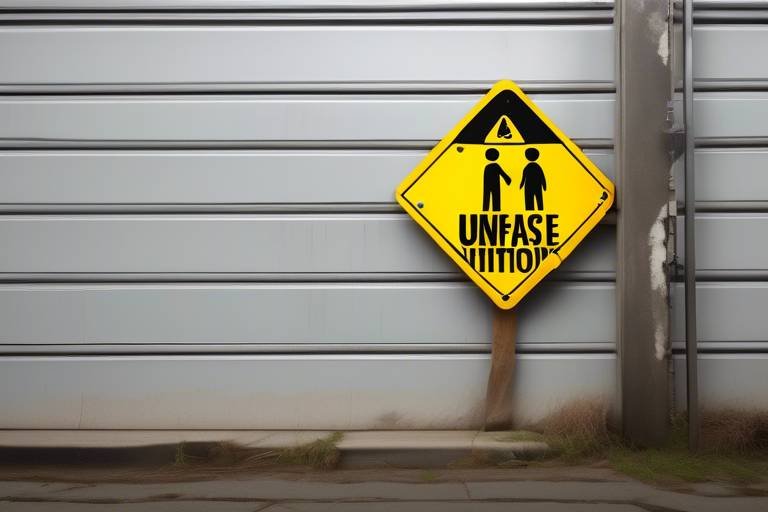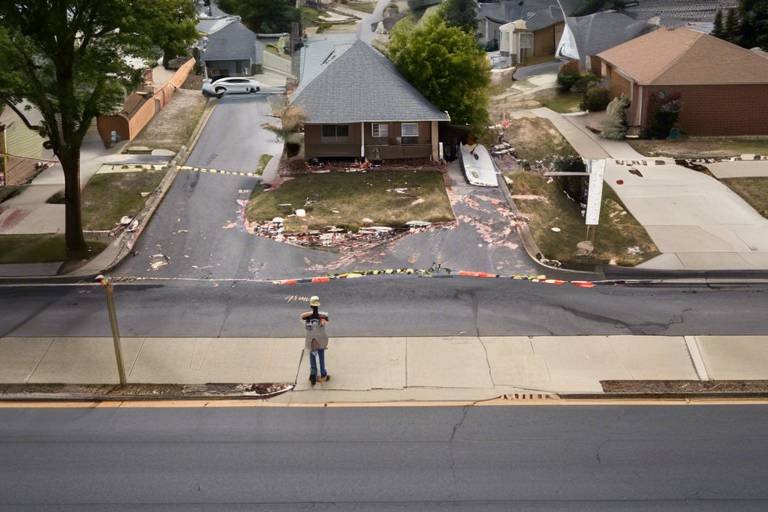Transgender Safety: Understanding and Preventing Risks
In a world that prides itself on progress and acceptance, the reality for many transgender individuals is still fraught with challenges. The concept of transgender safety goes beyond mere physical security; it encompasses emotional well-being, social acceptance, and the right to exist without fear. Understanding and preventing risks faced by transgender individuals is not just a matter of policy or law; it’s about fostering a culture of empathy and respect that acknowledges their humanity.
As we dive into this topic, it’s important to recognize that transgender individuals often navigate a landscape filled with obstacles. These can range from discrimination in the workplace to violent hate crimes. The need for protective measures is not just a suggestion but a necessity. Each of us has a role to play in creating an environment where transgender individuals feel safe and valued. By examining the risks they face, we can better understand how to implement effective strategies that enhance their safety across various environments.
Ultimately, this article aims to shed light on the multifaceted nature of transgender safety, exploring the challenges faced by this community and the steps we can take to create a more inclusive society. It’s not merely about acknowledging the risks; it’s about taking action to mitigate them. So, let’s embark on this journey together, fostering understanding and advocating for change.
Understanding the significance of transgender safety is crucial for fostering acceptance and reducing discrimination. The challenges faced by transgender individuals are numerous and complex, often rooted in societal norms and biases that have persisted for far too long. These challenges can manifest in various forms, including but not limited to, physical violence, emotional abuse, and systemic discrimination.
When we talk about safety, we must consider not just the physical aspect but also the emotional and psychological dimensions. Transgender individuals often experience rejection from family, friends, and society at large, leading to feelings of isolation and despair. This is why creating a supportive environment is not just beneficial; it is essential for their well-being. In this section, we will delve deeper into the common risks faced by transgender individuals, providing a clearer picture of why safety matters so profoundly.
Transgender individuals encounter numerous risks that can significantly impact their lives. These risks are not only physical but also emotional and psychological. The pervasive nature of violence, discrimination, and mental health issues creates a challenging environment for many. Understanding these risks is the first step toward addressing them effectively.
Physical violence against transgender individuals is alarmingly common. According to recent statistics, transgender individuals are disproportionately affected by hate crimes. In fact, studies show that they are more likely to experience violence than their cisgender counterparts. This violence often stems from deep-seated prejudices and societal factors that perpetuate discrimination.
Analyzing specific incidents of violence against transgender individuals can shed light on the severity of the issue. For instance, the tragic case of Marsha P. Johnson serves as a stark reminder of the dangers faced by transgender individuals. Her life and untimely death highlight the ongoing struggles for safety and recognition within the community.
Exploring effective strategies to prevent violence against transgender individuals is essential. Community initiatives, such as awareness campaigns and self-defense workshops, can empower individuals and foster a culture of safety. By equipping transgender individuals with skills and resources, we can help them navigate potentially dangerous situations more effectively.
Mental health issues are prevalent among transgender individuals, often stemming from societal rejection and discrimination. The constant struggle for acceptance can lead to anxiety, depression, and other mental health challenges. Access to mental health support and resources is vital for the community, as it can provide a lifeline for those in distress.
Establishing safe spaces for transgender individuals is vital for their well-being. These spaces can be physical locations, like community centers, or virtual environments, such as online support groups. The goal is to create inclusive environments that promote safety and acceptance. When individuals feel safe and supported, they are more likely to thrive and contribute positively to society.
Allies play a crucial role in supporting transgender individuals. Friends, family, and community members can contribute to a safer environment through advocacy and education. By speaking out against discrimination and standing in solidarity with transgender individuals, allies can help create a culture of acceptance and respect.
Advocating for policy changes is essential for improving transgender safety. Legislative measures and organizational policies can help protect transgender individuals in various settings, from workplaces to schools. By pushing for comprehensive protections and inclusive practices, we can create a more just society for everyone.
- What are the main risks faced by transgender individuals? Transgender individuals face risks such as physical violence, discrimination, and mental health challenges.
- How can allies support transgender safety? Allies can support transgender safety by advocating for inclusive policies and educating themselves and others about transgender issues.
- Why is creating safe spaces important? Safe spaces provide transgender individuals with a supportive environment where they can express themselves without fear of judgment or violence.

The Importance of Transgender Safety
Understanding the significance of transgender safety is crucial for fostering acceptance and reducing discrimination. In a world that often feels divided, recognizing the unique challenges faced by transgender individuals can bridge gaps and promote empathy. Imagine walking through life with a target on your back simply because of who you are; this is the reality for many in the transgender community. It’s essential to create an environment where every individual, regardless of their gender identity, can feel safe and valued.
Transgender individuals frequently encounter various forms of discrimination, which can manifest in both subtle and overt ways. From microaggressions in everyday conversations to outright violence, these experiences can lead to significant emotional and psychological distress. The need for protective measures goes beyond mere policies; it’s about cultivating a culture of respect and understanding. For instance, when we see a transgender person being mistreated, the silence often speaks volumes. It’s not just about the individual being targeted; it’s about the message it sends to the entire community.
Moreover, the impact of societal rejection can be devastating. Transgender individuals are at a higher risk for mental health issues, including anxiety and depression. The importance of mental health support cannot be overstated. Communities must come together to provide resources that help individuals navigate their identities in a supportive environment. This support could range from counseling services to community groups where transgender individuals can share their experiences and feel understood.
In addition to mental health resources, it’s vital to educate the broader public about transgender issues. Education can dismantle the misconceptions and stereotypes that fuel discrimination. When allies advocate for transgender rights and safety, they play a pivotal role in creating a more inclusive society. By standing up against discrimination and advocating for equal rights, they help to ensure that transgender individuals can live their lives authentically and without fear.
Ultimately, the importance of transgender safety extends beyond the individual; it reflects the values of our society as a whole. A commitment to safety and acceptance for all individuals fosters a sense of belonging and community. It’s not just about protecting one group; it’s about building a society where everyone has the opportunity to thrive. As we work towards this goal, let’s remember that every small action counts. Whether it’s speaking out against injustice or simply offering support to a friend, we all have a role to play in making the world a safer place for transgender individuals.
In conclusion, understanding and prioritizing transgender safety is not just a necessity; it’s a moral imperative. As we strive for a more inclusive society, let us challenge ourselves to be advocates for change, ensuring that every individual can navigate life without fear of discrimination or violence.

Common Risks Faced by Transgender Individuals
Transgender individuals navigate a world that is often fraught with challenges, and understanding these risks is critical for fostering empathy and creating a safer environment. From violence to discrimination, the risks faced by transgender people are multifaceted and deeply rooted in societal attitudes. One of the most alarming aspects is the prevalence of physical violence against transgender individuals, particularly among transgender women of color. According to recent statistics, transgender individuals are significantly more likely to experience violence compared to their cisgender counterparts. This violence is not just a statistic; it represents real lives affected, families shattered, and communities devastated.
The impact of discrimination extends beyond physical threats. Many transgender individuals face systematic discrimination in various areas of life, including employment, healthcare, and housing. For instance, studies reveal that a substantial percentage of transgender people have experienced job loss or unfair treatment in the workplace due to their gender identity. This not only affects their financial stability but also takes a toll on their mental health, leading to feelings of isolation and despair.
Moreover, the mental health challenges faced by transgender individuals cannot be overlooked. The constant threat of violence and discrimination contributes to higher rates of anxiety, depression, and suicidal thoughts. In fact, a significant portion of the transgender community reports experiencing mental health issues, often exacerbated by a lack of access to supportive resources. The stigma surrounding transgender identities can create a vicious cycle, where individuals feel trapped and unsupported.
To illustrate the severity of these risks, consider the following table that highlights key statistics regarding violence and discrimination faced by transgender individuals:
| Risk Factor | Percentage of Transgender Individuals Affected |
|---|---|
| Experienced physical violence | 46% |
| Reported discrimination in employment | 30% |
| Experienced homelessness | 20% |
| Struggled with mental health issues | 40% |
As we delve deeper into the risks faced by the transgender community, it's essential to recognize that these challenges are not isolated incidents but part of a larger societal issue. Understanding these risks is the first step toward developing effective strategies for prevention and support. By raising awareness and advocating for change, we can create a more inclusive society where transgender individuals can thrive without fear of violence or discrimination.
In the next sections, we will explore specific instances of violence, preventative measures, and the role of allies in fostering a safer environment for transgender individuals. But first, let’s address some frequently asked questions about the risks faced by this community.
- What are the main risks faced by transgender individuals? Transgender individuals commonly face risks such as physical violence, discrimination in various sectors, and mental health challenges.
- How can society help reduce these risks? By promoting awareness, advocating for policy changes, and fostering inclusive environments, society can significantly reduce risks faced by transgender individuals.
- Why are mental health issues prevalent among transgender individuals? These issues often stem from societal rejection, discrimination, and the constant threat of violence, leading to feelings of isolation and despair.

Physical Violence and Hate Crimes
Physical violence against transgender individuals is not just a statistic; it is a harsh reality that many face daily. The prevalence of hate crimes targeting this community is alarming, with reports indicating that transgender individuals are significantly more likely to experience violence compared to their cisgender counterparts. According to the Human Rights Campaign, in recent years, there has been a disturbing rise in the number of reported murders of transgender people, particularly among transgender women of color. This trend highlights the intersectionality of race, gender identity, and vulnerability, creating a perfect storm for violence against marginalized groups.
To truly understand the gravity of this issue, we must look at the statistics. A recent study revealed that nearly 50% of transgender individuals have reported experiencing physical violence at some point in their lives. This statistic is not just a number; it represents real people who have suffered trauma, fear, and in some cases, loss of life. The societal factors contributing to these hate crimes are complex, often rooted in deep-seated prejudices, misinformation, and a lack of understanding about transgender identities. The impact of such violence extends beyond the individual, affecting families, communities, and society as a whole.
Moreover, the media often sensationalizes cases of violence against transgender individuals, which can perpetuate harmful stereotypes and further alienate the community. It's crucial to examine specific incidents to grasp the severity of the issue. For example, the tragic case of Riah Milton, a transgender woman murdered in 2020, not only shocked the nation but also sparked widespread protests and discussions about transgender rights and safety. These incidents are not isolated; they are part of a larger pattern that demands our attention and action.
In light of these statistics and case studies, it is imperative to explore preventative measures against violence. Community initiatives that promote education, awareness, and advocacy can play a significant role in reducing hate crimes. For instance, workshops that educate law enforcement and community members about transgender issues can foster understanding and empathy. Additionally, self-defense tactics can empower transgender individuals, providing them with tools to protect themselves in dangerous situations.
Ultimately, addressing physical violence and hate crimes against transgender individuals requires a multifaceted approach. It involves not only protecting those at risk but also transforming societal attitudes towards gender identity. By fostering open conversations, promoting inclusive policies, and standing in solidarity with the transgender community, we can create a safer environment for everyone.
- What are hate crimes? Hate crimes are criminal acts motivated by bias against a person's race, ethnicity, religion, sexual orientation, gender identity, or other characteristics.
- How can I support transgender individuals in my community? You can support transgender individuals by educating yourself about their experiences, advocating for their rights, and standing against discrimination and violence.
- What resources are available for transgender individuals facing violence? Many organizations provide resources, including hotlines, counseling services, and legal assistance for transgender individuals facing violence or discrimination.

Case Studies of Violence
When we talk about violence against transgender individuals, it’s not just statistics that paint the picture; it’s the real stories behind those numbers that reveal the harsh realities of their lives. For instance, consider the tragic case of Brandon Teena, a transgender man who was brutally murdered in 1993 in Nebraska simply for living his truth. His story not only shocked the nation but also ignited a conversation about the violence faced by transgender individuals. Brandon's life and death serve as a poignant reminder of the vulnerability that many in the transgender community experience.
Another heartbreaking example is the case of Marsha P. Johnson, a prominent figure in the LGBTQ+ rights movement. While she was not a victim of violence in the traditional sense, her untimely death in 1992 raised questions about the safety of transgender activists. Marsha's legacy continues to inspire, but her case highlights a crucial point: even those fighting for justice can fall prey to violence. The circumstances surrounding her death remain shrouded in mystery, reflecting the ongoing risks faced by those who dare to challenge societal norms.
In recent years, the rise in reported hate crimes against transgender individuals has been alarming. According to a report by the Human Rights Campaign, there were at least 44 reported cases of fatal violence against transgender and gender non-conforming people in 2020 alone. This statistic is not just a number; it represents lives lost, families shattered, and communities left to mourn. Each case has its unique circumstances, but they collectively underscore a pervasive culture of violence and discrimination.
| Year | Victim | Location | Details |
|---|---|---|---|
| 2018 | Jordan Cofer | Florida | Shot and killed in a targeted attack. |
| 2019 | Layleen Polanco | New York | Died in solitary confinement; raised concerns about treatment in prison. |
| 2020 | Riah Milton | Ohio | Murdered in a suspected hate crime. |
These case studies illustrate not only the violence but also the systemic failures that allow such tragedies to occur. They remind us that there is an urgent need for change. Advocating for better protection and support for transgender individuals is not just a matter of policy; it's about recognizing their humanity and worth. As we reflect on these stories, we must ask ourselves: what can we do to prevent such violence in the future? How can we create a society where everyone, regardless of their gender identity, feels safe and valued?
It's essential to understand that behind every statistic is a person with dreams, hopes, and loved ones. The fight for transgender safety is a collective responsibility, and each of us has a role to play in fostering an environment where violence has no place.
- What can I do to support transgender individuals in my community? You can educate yourself and others about transgender issues, advocate for inclusive policies, and stand against discrimination.
- How can I help create safe spaces for transgender people? Engage in community discussions, support local LGBTQ+ organizations, and promote awareness about transgender rights and safety.
- What resources are available for transgender individuals facing violence? There are numerous organizations, such as the National Center for Transgender Equality and local LGBTQ+ support groups, that provide resources and assistance.

Preventative Measures Against Violence
Preventing violence against transgender individuals requires a multifaceted approach that combines community engagement, education, and personal empowerment. It’s not just about reacting to violence; it’s about creating an environment where such acts are less likely to occur in the first place. One of the most effective measures is community awareness programs. These initiatives aim to educate both the transgender community and the general public about the unique challenges faced by transgender individuals. By fostering understanding and empathy, we can reduce the stigma that often leads to violence.
Additionally, self-defense training can be a powerful tool for personal safety. Workshops that teach self-defense techniques not only equip transgender individuals with the skills needed to protect themselves but also boost confidence. Feeling empowered can significantly reduce the fear that often accompanies being a target of violence. Moreover, these workshops can create a sense of community, as participants share their experiences and support one another.
Another important preventative measure is the establishment of safe zones in public spaces. These are designated areas where transgender individuals can seek refuge and feel secure. Communities can work together to identify and promote these areas, ensuring they are well-lit, monitored, and accessible. Local businesses can also participate by displaying signs indicating their support for transgender safety, which can help foster a more inclusive environment.
Moreover, it’s crucial for law enforcement agencies to receive training on transgender issues. When police officers understand the unique challenges faced by the transgender community, they can respond more effectively to incidents of violence and discrimination. This not only helps victims feel safer reporting crimes but also builds trust between the community and law enforcement.
Finally, advocacy for legislative changes to protect transgender rights is essential. This can include pushing for laws that specifically address hate crimes against transgender individuals and ensuring that there are consequences for those who engage in violence. By creating a legal framework that supports transgender safety, we can send a strong message that violence will not be tolerated.
In summary, preventing violence against transgender individuals is a collective responsibility that involves education, empowerment, community support, and legislative action. By implementing these measures, we can work towards a society where everyone, regardless of their gender identity, feels safe and respected.
- What are some signs of a safe space for transgender individuals?
A safe space often includes inclusive signage, visible support from staff, and a welcoming atmosphere where individuals feel comfortable expressing their identity.
- How can I support a transgender friend who feels unsafe?
Listen to their concerns, offer to accompany them in public spaces, and advocate for their safety in your community.
- What should I do if I witness violence against a transgender person?
It’s important to assess the situation for your own safety first. If it’s safe to do so, intervene by calling for help or providing support to the victim afterward.

Mental Health Challenges
The journey of transgender individuals is often fraught with unique that can significantly impact their overall well-being. Imagine navigating a world where your identity is constantly questioned, dismissed, or outright attacked; this is the reality for many in the transgender community. Studies reveal that transgender individuals are at a higher risk for mental health issues compared to their cisgender counterparts. This disparity is not merely a coincidence; it stems from a combination of societal rejection, discrimination, and the stress of living in a world that often fails to recognize their humanity.
One of the most alarming statistics is that transgender individuals are more likely to experience depression, anxiety, and other mental health disorders. A survey conducted by the National Center for Transgender Equality found that nearly 40% of respondents reported having attempted suicide at some point in their lives. This figure is staggering and highlights the urgent need for mental health resources tailored specifically for transgender individuals. The emotional toll of discrimination and violence can lead to feelings of isolation, hopelessness, and despair, making it essential to address these issues head-on.
Moreover, the stigma surrounding mental health in general can be particularly pronounced within the transgender community. Many individuals may feel hesitant to seek help due to fears of being misunderstood or further marginalized. This reluctance can exacerbate existing mental health issues and create a vicious cycle that is difficult to break. It's crucial for mental health professionals to be trained in cultural competence to provide effective support to transgender clients. Understanding the unique challenges they face is vital for fostering a therapeutic environment where individuals feel safe and validated.
Access to mental health resources is another significant barrier. Many transgender individuals live in areas where mental health services are limited, and those that are available may not be equipped to handle the specific needs of the transgender population. This lack of access can lead to increased feelings of frustration and helplessness. To combat this, communities must advocate for more inclusive mental health services and ensure that these resources are readily available to those who need them most.
In conclusion, addressing the mental health challenges faced by transgender individuals is not just a matter of providing therapy; it involves creating a supportive environment that acknowledges their struggles and validates their experiences. By fostering open conversations about mental health and advocating for better resources, we can help break the stigma and create a safer, more inclusive society for everyone.
- What are the common mental health issues faced by transgender individuals? Transgender individuals often experience higher rates of depression, anxiety, and suicidal thoughts due to societal rejection and discrimination.
- How can mental health professionals better support transgender clients? Mental health professionals should receive training in cultural competence to understand the unique challenges faced by transgender individuals.
- What resources are available for transgender individuals seeking mental health support? Many organizations offer specialized resources, including hotlines, support groups, and therapy services tailored to the transgender community.

Creating Safe Spaces
Establishing safe spaces for transgender individuals is not just a good idea; it's a necessity. Imagine walking into a room where you can be your true self without fear of judgment or harm. That's what safe spaces aim to provide. These environments are designed to foster acceptance, promote well-being, and ensure that everyone feels valued and respected. But how do we create these spaces? It starts with understanding the unique challenges that transgender individuals face and actively working to address them.
Safe spaces can be established in various settings, such as schools, workplaces, and community centers. For instance, schools can implement anti-bullying policies that specifically address the needs of transgender students. This means not only having clear rules but also providing training for teachers and staff on how to support and protect these individuals. Similarly, workplaces can create inclusive policies that respect gender identity and expression, ensuring that all employees feel secure and valued. By fostering an atmosphere of respect, we can help transgender individuals thrive.
Moreover, community centers can serve as hubs for connection and support. They can host events, workshops, and support groups tailored to the transgender community. Such initiatives not only provide resources but also create a network of support that can be vital for individuals navigating their identity. Imagine a safe haven where you can share your experiences, learn from others, and find camaraderie in shared struggles. That’s the essence of creating safe spaces.
To further enhance these efforts, it’s essential to engage with the transgender community directly. Listening to their needs and experiences can lead to more effective strategies and initiatives. For example, conducting surveys or focus groups can help identify specific areas where support is lacking. This feedback loop is crucial; it ensures that the spaces we create are genuinely safe and welcoming.
In addition, a culture of allyship can significantly contribute to the safety of transgender individuals. Allies can help reinforce the values of respect and acceptance within these spaces. They can stand up against discrimination, challenge harmful stereotypes, and advocate for policy changes that protect transgender rights. When allies actively participate in creating safe environments, it sends a powerful message that the community stands together against injustice.
Lastly, let’s not forget the importance of visibility. Creating safe spaces also means making them known. Promoting these initiatives through social media, community events, and local organizations can help reach those who might need them the most. When transgender individuals know there are places where they can feel safe and accepted, it can make a world of difference.
In summary, creating safe spaces for transgender individuals involves a multifaceted approach that includes policy changes, community engagement, allyship, and visibility. It’s about building a culture where everyone, regardless of their gender identity, can feel secure and valued. The journey to these safe spaces may be long, but every effort counts, and together, we can make a significant impact.
- What are safe spaces? Safe spaces are environments where individuals can express themselves without fear of discrimination or harm.
- How can I contribute to creating safe spaces? You can contribute by educating yourself and others, advocating for inclusive policies, and supporting transgender individuals in your community.
- Why are safe spaces important for transgender individuals? Safe spaces provide a sense of belonging and acceptance, helping to reduce the risks of violence and discrimination that transgender individuals often face.

Role of Allies in Safety
Allies play a crucial role in enhancing the safety and well-being of transgender individuals. You might wonder, "What exactly can I do to help?" Well, the answer lies in understanding that being an ally goes beyond mere words; it involves action, support, and a commitment to fostering an inclusive environment. Allies can be friends, family members, coworkers, or even strangers who recognize the importance of standing up for the rights and dignity of transgender people. Their involvement can significantly reduce the risks faced by this community.
One of the most powerful ways allies can contribute is by educating themselves and others about transgender issues. This means taking the time to learn about the challenges transgender individuals face, including discrimination, violence, and mental health struggles. When allies are informed, they can effectively challenge misconceptions and stereotypes, creating a ripple effect of understanding and acceptance. It's like being a lighthouse in a storm; the more allies shine their light, the safer and more visible transgender individuals become.
Additionally, allies can use their voices to advocate for transgender rights in various spaces—whether it's at work, in social settings, or within their communities. This advocacy can take many forms, from speaking up against transphobic remarks to supporting policies that protect transgender rights. For instance, if an ally witnesses someone being mistreated due to their gender identity, they can intervene, offering support and standing against the injustice. This proactive stance can make a world of difference, showing transgender individuals that they are not alone and that their allies are willing to fight for their safety.
Moreover, creating safe spaces is essential. Allies can help establish environments where transgender individuals feel comfortable expressing themselves without fear of judgment or harm. This could mean advocating for gender-neutral bathrooms in public spaces or supporting organizations that focus on transgender issues. When allies take these steps, they contribute to a culture of acceptance and understanding, which is vital for the safety of transgender individuals. Think of it as building a protective bubble around the community where everyone can thrive.
In addition, emotional support is equally important. Allies should be willing to listen to the experiences of transgender individuals and validate their feelings. This support can help combat feelings of isolation and despair, which are often prevalent in marginalized communities. Simple gestures—like checking in on a friend or offering a listening ear—can have a profound impact on someone's mental health and sense of belonging.
Finally, allies can also participate in community initiatives aimed at enhancing transgender safety. Joining local advocacy groups, attending workshops, or volunteering for events focused on transgender visibility can amplify the voices of those who need it most. By being active participants in these efforts, allies not only show their support but also help create a stronger, more united front against discrimination and violence.
In summary, the role of allies in ensuring the safety of transgender individuals is multifaceted and impactful. By educating themselves, advocating for rights, creating safe spaces, offering emotional support, and engaging in community initiatives, allies can play a significant part in fostering a society where everyone, regardless of their gender identity, can feel safe and accepted.
- What does it mean to be an ally?
An ally is someone who supports and advocates for marginalized groups, including transgender individuals, by standing up against discrimination and promoting equality. - How can I educate myself about transgender issues?
You can read books, watch documentaries, follow transgender activists on social media, and attend workshops or seminars focused on transgender rights and experiences. - What should I do if I witness discrimination against a transgender person?
Intervene if it is safe to do so, offer support to the person being discriminated against, and report the incident if necessary. - How can I create a safe space for transgender individuals?
Encourage open dialogue, respect individuals' preferred names and pronouns, and advocate for inclusive policies in your community or workplace.

Policy Changes for Enhanced Safety
To truly enhance the safety of transgender individuals, it’s essential to advocate for policy changes that address the systemic issues contributing to discrimination and violence. These changes can take many forms, from local ordinances to national legislation, and their impact can be profound. By implementing comprehensive policies, we can create a framework that not only protects transgender individuals but also promotes acceptance and understanding within society.
One of the most critical areas for policy reform is anti-discrimination laws. Currently, many states lack robust protections for transgender individuals in employment, housing, and public accommodations. For instance, a study by the National Center for Transgender Equality found that nearly 30% of transgender individuals reported being fired, denied a promotion, or experiencing some form of workplace discrimination. By enacting laws that specifically prohibit discrimination based on gender identity, we can help ensure that transgender individuals have equal rights and opportunities.
Furthermore, hate crime legislation must be updated to explicitly include protections for transgender individuals. While many jurisdictions have laws against hate crimes, these laws often do not specifically mention gender identity, leaving transgender individuals vulnerable to violence. By amending these laws to include gender identity as a protected category, we can send a clear message that violence against transgender individuals will not be tolerated.
Another essential component of enhancing safety is the need for comprehensive training programs for law enforcement and first responders. Often, transgender individuals face discrimination or bias when interacting with police, which can deter them from seeking help in dangerous situations. By implementing training programs that focus on understanding transgender issues, law enforcement can build trust within the community and ensure that all individuals feel safe reporting crimes.
In addition to these measures, schools play a pivotal role in fostering a safe environment for transgender youth. Policies that mandate inclusive curricula and provide support for transgender students can significantly reduce bullying and harassment. Schools should implement gender-neutral bathrooms and provide access to counseling services tailored to the needs of transgender students. This proactive approach not only safeguards students but also educates peers about diversity and acceptance.
Lastly, it’s imperative to engage in ongoing dialogue with the transgender community when developing policies. Their lived experiences and insights are invaluable in shaping effective measures. Community forums, surveys, and workshops can help policymakers understand the specific needs and concerns of transgender individuals, ensuring that the policies enacted are both relevant and effective.
In summary, the path to enhanced safety for transgender individuals lies in comprehensive policy changes that address discrimination, violence, and the unique challenges faced by this community. By advocating for inclusive laws, training programs, and supportive environments, we can create a society where everyone, regardless of their gender identity, feels safe and valued.
- What are the key policy changes needed to enhance transgender safety?
Key changes include anti-discrimination laws, hate crime legislation, and inclusive policies in schools and workplaces. - How can allies help in advocating for these changes?
Allies can raise awareness, participate in advocacy efforts, and support transgender individuals in their communities. - What role do local governments play in enhancing transgender safety?
Local governments can enact ordinances that protect transgender rights and promote inclusive practices within their jurisdictions.
Frequently Asked Questions
- What are the main risks faced by transgender individuals?
Transgender individuals often face a range of risks, including physical violence, discrimination in various settings, and significant mental health challenges. These risks stem from societal attitudes and systemic inequalities that can lead to harmful situations.
- How can communities create safe spaces for transgender individuals?
Creating safe spaces involves fostering inclusive environments where transgender individuals feel accepted and protected. This can be achieved through community education, outreach programs, and establishing policies that promote equality and respect for all identities.
- What role do allies play in enhancing transgender safety?
Allies are crucial in supporting transgender individuals by advocating for their rights, educating others about transgender issues, and standing up against discrimination. Their support can significantly contribute to creating a safer and more inclusive environment.
- What are some effective strategies to prevent violence against transgender individuals?
Effective strategies include community awareness campaigns, self-defense training programs, and creating support networks. Engaging local law enforcement in training on transgender issues can also help reduce violence and increase safety.
- How can mental health support be improved for transgender individuals?
Improving mental health support involves providing access to knowledgeable therapists, creating support groups, and ensuring that mental health services are inclusive and affirming of transgender identities. Awareness campaigns can also help reduce stigma and encourage individuals to seek help.
- What legislative measures can enhance transgender safety?
Legislative measures that can enhance safety include anti-discrimination laws, hate crime legislation specifically protecting transgender individuals, and policies that ensure equal access to healthcare and employment. Advocacy for these changes is vital.



















